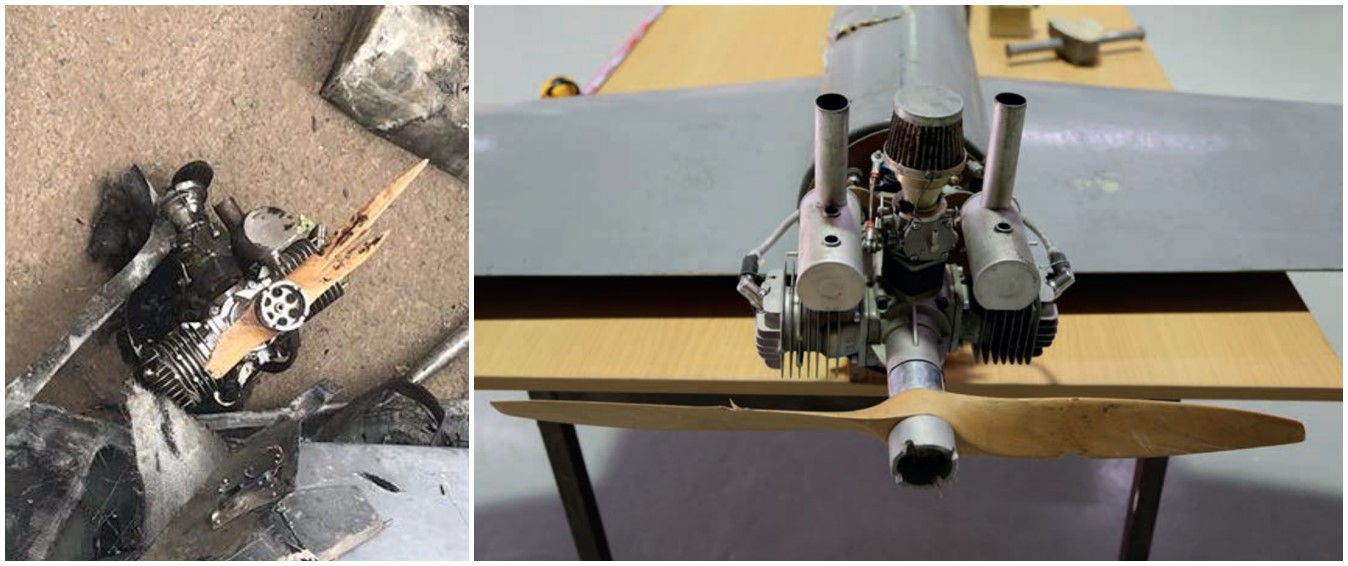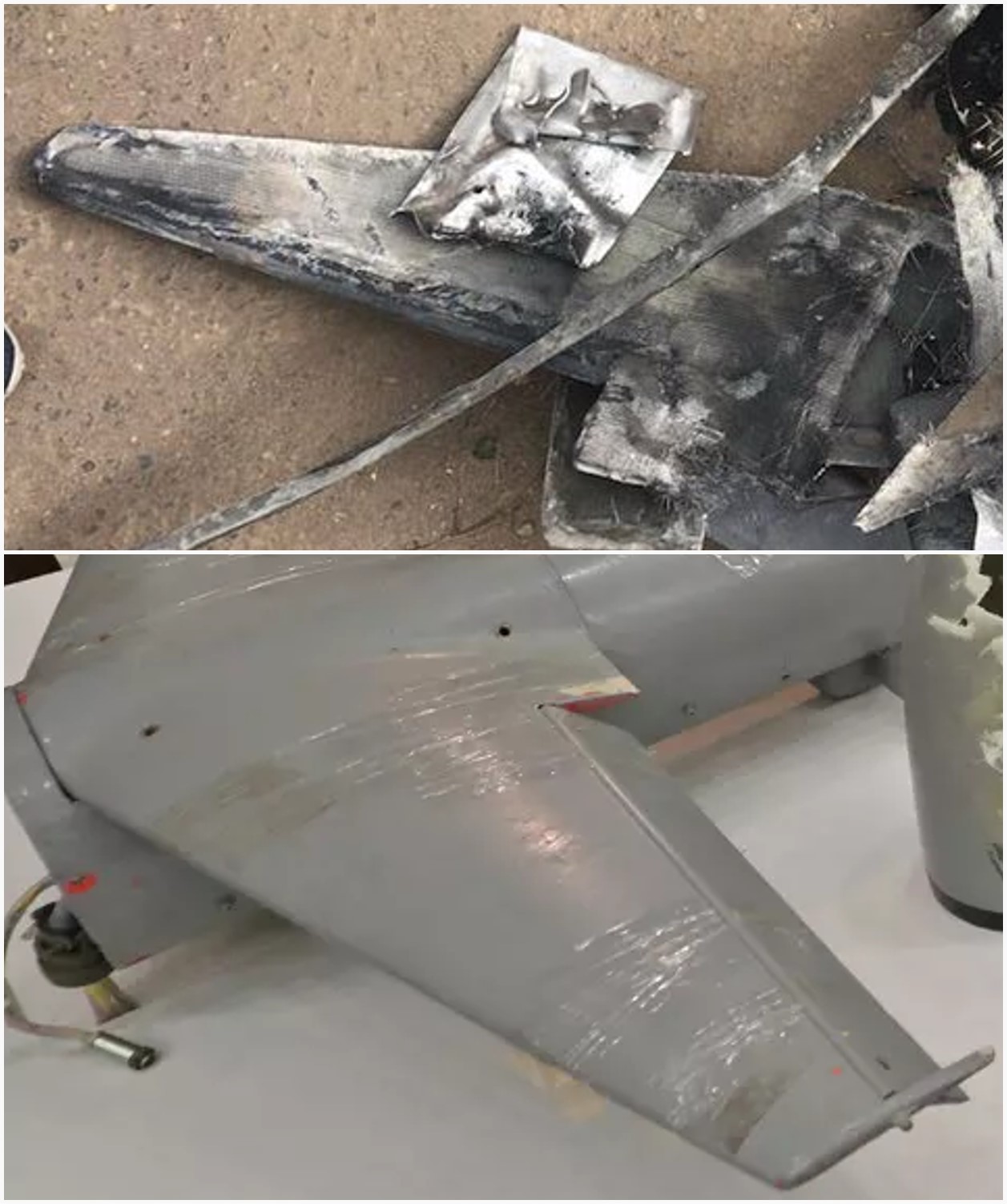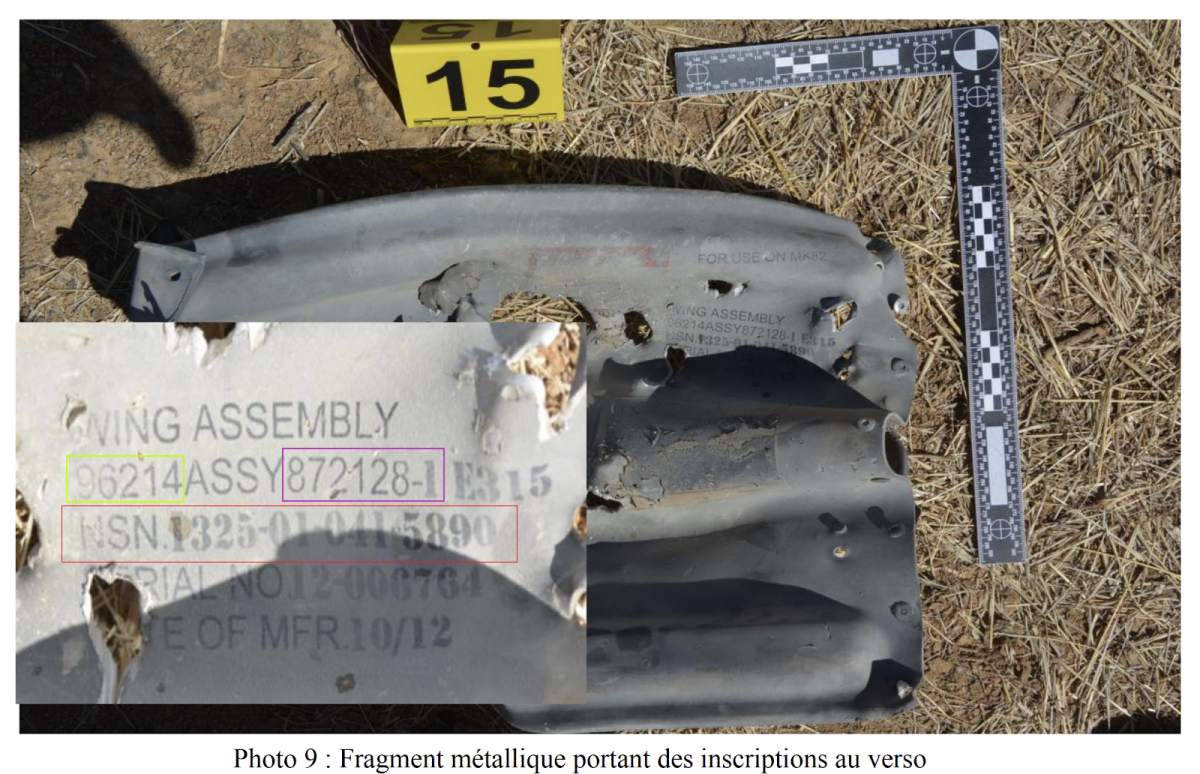Houthis Use Armed Drone to Target Yemeni Army Top Brass
On January 10, 2019 a drone reportedly targeted a Yemeni government base during a military parade, allegedly killing six people and wounding many others, including several senior officers. Analysis of the attack indicates that a variant of an Ababil T drone, referred to as a Qasef 1 by Houthi forces, was used to attack the parade. This article will analyse the event and its potential implications.
Location
The location of the attack was reported to be Al Anad Airbase. Geolocation of videos from the attack, however, indicate it happened at Al Anad military base, about 5 km north of the airport proper.
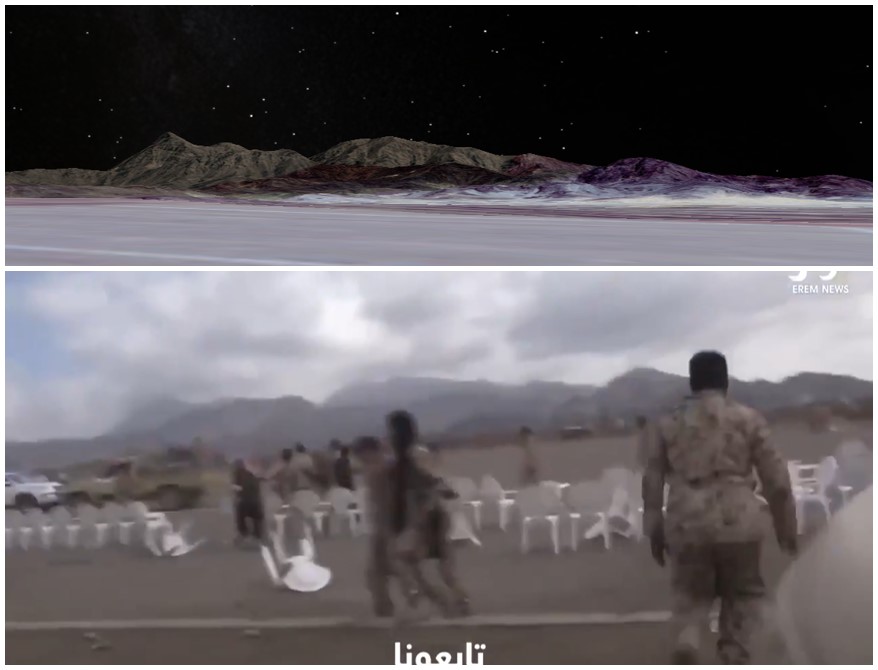
Image 1: Comparison of mountain range (source)
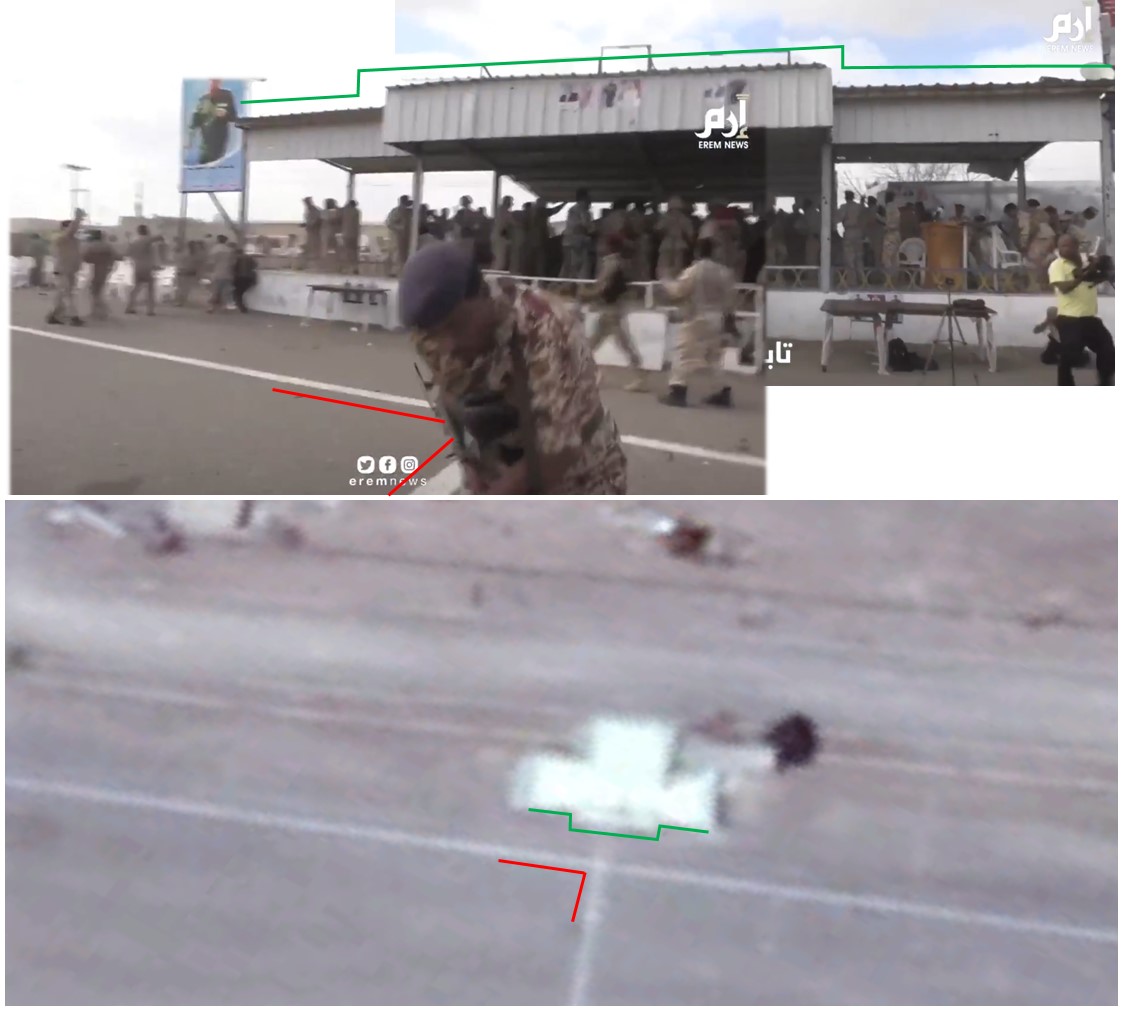
Image 2: Exact geolocation (source)
Most open-source conflict maps indicate this location is approximately 30 km away from the nearest Houthi territory, out of range of most conventional artillery.
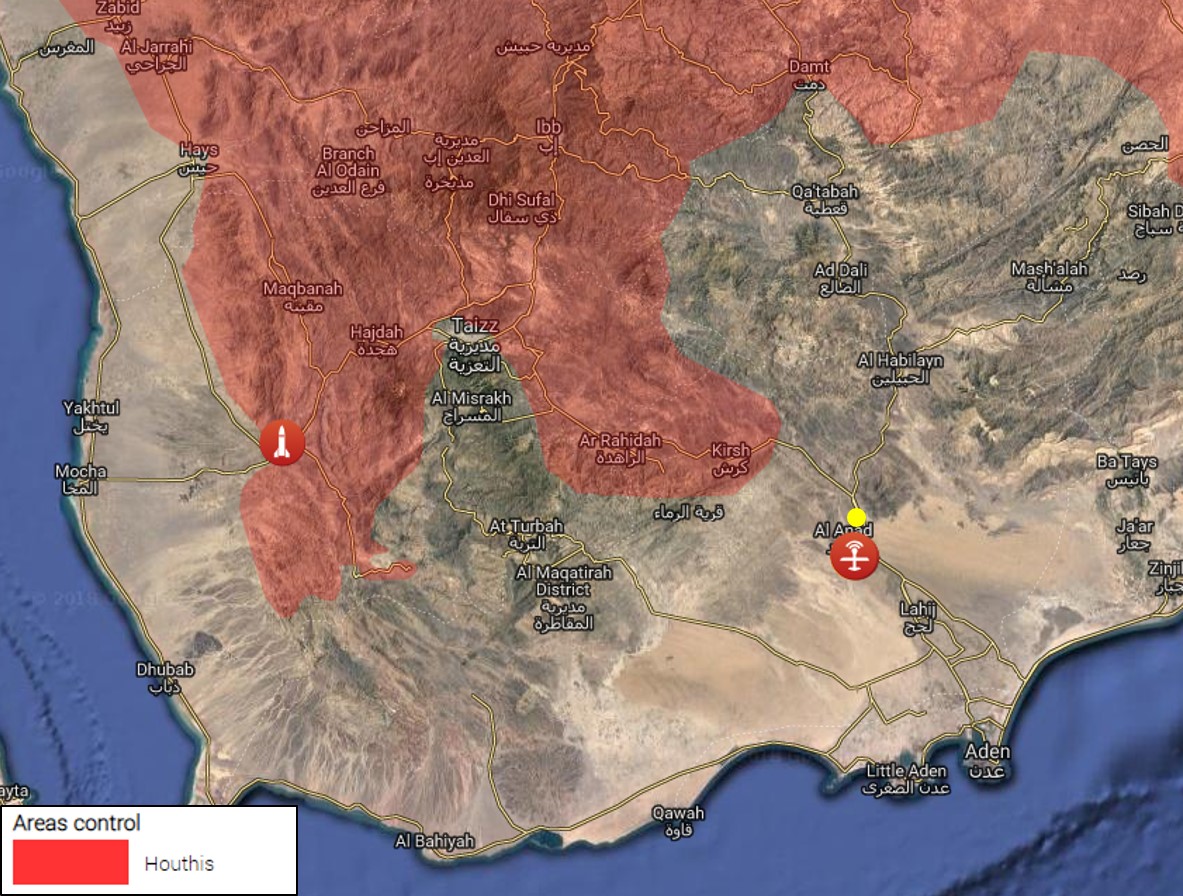
Image 3: Territory held by Houthis indicated in red. Location of attack indicated by yellow dot. (source)
The Attack
The video below shows the attack relatively clearly, showing an object descending to the location of the dais and then detonating above it.
(source)
A slow motion video of the detonation is presented below. Note that the roof of the dais can be seen to the lower right of the screen.
Although it is difficult to be sure, the videos appear to show the drone detonating almost immediately above the dais, where the VIPs were sitting down to view the parade. This is consistent with images posted after the attack, showing blood pools on the dais itself. These pools are immediately in front of several leather chairs placed in the center of the dais, where the most important guests were seated.

Image 4: Pool of blood where senior officers were sitting (source)
A video taken of the dais itself shows the moment of the attack, although not the drone itself. It appears that the speaker falls to the floor injured, while there is significant commotion among the crowd on the dais itself.
(source)
The Casualties
At the time of writing reports of casualties remain confused. Medics at a nearby hospital claimed that six people had been killed and 12 wounded. The wounded reportedly included General Zindani, the intelligence chief Brigadier General Mohammed Saleh Tamah, and senior army commander Fadel Hasan. There were contradictory reports as to whether Yemeni Government army Chief of Staff Gen Abdullah al-Nakhi had been injured or not. What is clear is that there were a large number of senior officers present in the immediate vicinity of the detonation, next to the lectern where the speaker appears to have been wounded in Video 3.

Image 5: Composite image showing VIPs. Note the speaker at the lectern on the far right (source, source)
The Drone
Fragments seen in videos and images of the attack, as well as the distinctive shape of the drone seen in videos, indicate that it is from the Iranian designed Ababil II family. A version of the Ababil II, the Ababil T, has been used the Houthis under the name Qasef 1.

Image 6: Comparison of a captured Ababil T (top, source), and stills from BBC video (bottom, source)
An engine recovered after the attack appears to be a DLE 111 petrol engine, the same kind found by Conflict Armament Research (CAR) in the Ababil T.
Other fragments also appeared to fit the front canard and rear wings of an Ababil T.
The Houthis have consistently claimed that the Qasef 1 is among their several domestically designed and manufactured drones, but a thorough investigation by CAR indicated that these drones are in fact likely smuggled into Yemen from Iran. The Houthis have also claimed to have developed a manufacturing base and to have started producing these drones within Yemen, which should certainly be regarded as a possibility.
The use of a Qasef 1/Ababil T would be relatively consistent with claims made by the Houthis after the attack, although they stated a “Qasef 2K” had been used. It is not currently known how a Qasef 2K differs from a Qasef 1.
Ababil T drones are not particularly advanced UAVs, coming from a family of drones used as targets for anti-aircraft practice. Although they have been armed with explosives and used to attack targets at range, they still have very limited capability compared to more modern drones such as the MQ-9 Reaper or even the Chinese Wing Loong. The Houthis have previously deployed their Ababil T’s using GPS to guide them to pre-set coordinates under control of an autopilot, a simple technique that can be applied to the most basic of drones.
Analysis
This event is a major demonstration of Houthi capabilities. Although Ababil T’s have reportedly been used to attack Saudi Arabian Patriot missile radar arrays, this event is rather more complex. While radar arrays are relatively static, the guests at this parade would have been mobile, only sitting at the dais for a limited window of time.
The Houthis would have had to know where and when this parade was going to happen, and know exactly when to launch a single drone in order to hit the dais when it was full of high-value targets. Considering the extraordinary nature of this attack, it also seems likely they knew that several high-ranking officers would be present.
The exact weapon carried by the drone is unknown, but the number of casualties indicates it was effective. A media report claimed that the drone was intended to detonate 20 meters above the target. If the drone was armed with some kind of directional anti-personnel munition similar to a claymore mine then this height would maximise the lethal radius of the munition. However, it should be noted that no fragments of the exact munition appear to have been recovered at the time of writing.
Conclusion
This event marks a significant milestone during the conflict in Yemen, as well as the application of basic armed drones to conflict in general. The Houthis appear to have combined effective intelligence with good planning and used a basic yet effective tool to target multiple high value targets. Although the exact extent of the casualties remains to be seen, the Houtis have shown that they can reach deep into enemy territory to strike high ranking members of the Yemeni Military.
Over the last decade UAVs have proliferated across the world, whether in the form of small, commercial models such as the DJI Phantom, or large military versions such as the Wing Loon. This proliferation has extended the range and complexity of operations that sub-state actors can carry out, whether that be targeting a Russian airbase in Syria, attempting to assassinate a head of state, or in this case, attack a large gathering of senior officers in what they formerly regarded as a safe place. It is likely the theme set by this attack will continue to develop in the near future.
